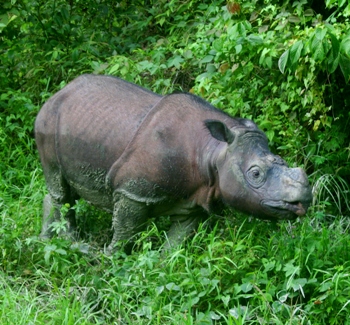In India's Kaziranga National Park, rhinos and tigers are thriving, because poachers are dying instead. When it comes to poachers, the park's rangers have a license to kill, and they do. It gets results:
In 2010, only five rhinos were shot in Kaziranga, while nine poachers were killed, the first time poacher deaths surpassed rhinos. (For comparison, in South Africa, where rangers fire only in self-defense, five poachers were killed in 2010, while 333 rhinos were poached.)
These guys were breaking the law and killing endangered species. But the moral calculus here isn't so clear-cut. In the park's region, jobs are scarce. Park animals eats crops and kill farm animals, and poaching pays better than any other pursuit. Shooting poachers on sight is apparently the most effective way to conserve the park’s threatened animals, but how does that stack up against human injustice? It’s a complicated calculation.
The article’s author, Rowan Jacobson, argues that it's the heightened level of violence in the area that inures rangers, who basically work for food and board, to killing poachers:
Every day I was in Assam, the local paper was filled with carnage. Soldiers killed militants. Militants killed soldiers. Militants killed rival militants. A rhino wandered out of a park and killed a bicyclist. Old women were killed on suspicion of witchcraft. A tea-plantation worker was found shot dead. Jitney drivers atomized each other on the lanes-optional roads….Shooting poachers? A no-brainer.
This really is a gruesome article. At least four people die: park guards shoot two of them; a rhino dispatches a third; and a tiger mauls the fourth. A local reporter runs a network of informers, "like a mini-CIA," that helps tip off the guards when poachers are going to be gunning for rhinos. All of this action is good news for the tigers, rhinos, and other protected species in the park. The people who live in the area, though, are pretty screwed.


